NARI Letter Submitted to Senate about RRP Rule Speaks to Contractor Concerns
 In a recent letter submitted to the US Senate, NARI Executive Director Mary Busey Harris did a great job advising the EPA of critical concerns legitimate remodelers have about the EPA’s creation, enforcement and administration of the RRP Lead Rule. The letter points out that law abiding professional remodelers are particularly challenged by two considerations having to do with the additional costs related to the current rule as well as the proposed dust wipe amendment. Here is an excerpt from the letter:
In a recent letter submitted to the US Senate, NARI Executive Director Mary Busey Harris did a great job advising the EPA of critical concerns legitimate remodelers have about the EPA’s creation, enforcement and administration of the RRP Lead Rule. The letter points out that law abiding professional remodelers are particularly challenged by two considerations having to do with the additional costs related to the current rule as well as the proposed dust wipe amendment. Here is an excerpt from the letter:
"Currently, EPA estimates that more than 500,000 individuals have been trained on how to comply with LRRP. Despite EPA’s training success, we are witnessing two disturbing trends that threaten our livelihood and potentially endanger homeowners and children.
First, the cost increase for remodeling projects done in full compliance with EPA regulations is causing homeowners to hire unlicensed contractors or to do construction work themselves. This situation endangers children who may be exposed to lead caused by unsafe work practices.
Second, EPA is expected to finalize the “clearance” portion of the LRRP rules this July. NARI is concerned that EPA will lack sensitivity towards the impact pricing has on hiring licensed and certified contractors. The rules, if finalized with overly burdensome requirements, may drive up costs and exacerbate the problems we are currently witnessing – driving more homeowners towards unlicensed or unethical contractors."
 In the letter Harris points out that NARI would like to work with the Committee on Small Business & Entrepreneurship to “reiterate to EPA the impact LRRP is having on remodelers and to facilitate a better dialogue on how EPA can implement the LRRP rules in a small business-friendly way” She further goes on to suggest that; ”With the Committee’s help, remodelers and EPA officials can work towards solutions that will better inform homeowners of lead hazards, penalize unlicensed or unethical contractors, and reduce the exposure of children to lead from construction activities”
In the letter Harris points out that NARI would like to work with the Committee on Small Business & Entrepreneurship to “reiterate to EPA the impact LRRP is having on remodelers and to facilitate a better dialogue on how EPA can implement the LRRP rules in a small business-friendly way” She further goes on to suggest that; ”With the Committee’s help, remodelers and EPA officials can work towards solutions that will better inform homeowners of lead hazards, penalize unlicensed or unethical contractors, and reduce the exposure of children to lead from construction activities”
 I commend NARI for reaching out to work with government officials regarding the EPA RRP Lead Rule in a constructive and thoughtful way. I hope the Senate and the Committee on Small Business & Entrepreneurship will embrace NARI’s offer. The remodeling industry and remodelers need their voices to be heard. Even more important, EPA needs to listen if the RRP rule is to be effective and our government is truly interested in protecting America’s children as well as professional remodelers from the negative effects of the underground economy.
I commend NARI for reaching out to work with government officials regarding the EPA RRP Lead Rule in a constructive and thoughtful way. I hope the Senate and the Committee on Small Business & Entrepreneurship will embrace NARI’s offer. The remodeling industry and remodelers need their voices to be heard. Even more important, EPA needs to listen if the RRP rule is to be effective and our government is truly interested in protecting America’s children as well as professional remodelers from the negative effects of the underground economy.

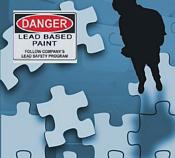 Looking for accurate information about the EPA RRP rule?
Looking for accurate information about the EPA RRP rule?  On December 2nd, 2010 I attended an
On December 2nd, 2010 I attended an  At the workshop Joe Ceccarelli, a trainer with Safety Trainers, shared some information with the attendees regarding OSHA’s plans to step up inspections and increase fine amounts related to the residential construction Industry. He told us that OSHA Region 1 has hire 250 new additional field inspectors and 40 of those have been assigned to Massachusetts alone. I was quite taken back when Joe told us he had learned that 72% of OSHA violations levied against residential construction businesses were for what OSHA calls “serious or willful violations” and resulted in fines ranging from $3000 to $70,000.
At the workshop Joe Ceccarelli, a trainer with Safety Trainers, shared some information with the attendees regarding OSHA’s plans to step up inspections and increase fine amounts related to the residential construction Industry. He told us that OSHA Region 1 has hire 250 new additional field inspectors and 40 of those have been assigned to Massachusetts alone. I was quite taken back when Joe told us he had learned that 72% of OSHA violations levied against residential construction businesses were for what OSHA calls “serious or willful violations” and resulted in fines ranging from $3000 to $70,000.  Recently I published three articles to RRPedia regarding the EPA Recognized test kits. Links to these articles are at the end of this article. On November 15th, 2010, Dan Askin, President & Technical Director of
Recently I published three articles to RRPedia regarding the EPA Recognized test kits. Links to these articles are at the end of this article. On November 15th, 2010, Dan Askin, President & Technical Director of  First off, Dan clarified that the test kits are not “approved” by EPA; rather, they are “Recognized” by EPA. In order to be recognized for RRP use, test kits must pass the EPA approved testing process specified in the final rule.
First off, Dan clarified that the test kits are not “approved” by EPA; rather, they are “Recognized” by EPA. In order to be recognized for RRP use, test kits must pass the EPA approved testing process specified in the final rule.  In my articles I expressed my opinion that the
In my articles I expressed my opinion that the  In one of my articles I stated that the “Lead Check swabs contain everything you need inside the swabs. You can just squeeze the kits with your fingers as instructed, shake the swab and you are ready to test. The D-Lead kits require measuring and mixing chemicals to get ready for testing.”
In one of my articles I stated that the “Lead Check swabs contain everything you need inside the swabs. You can just squeeze the kits with your fingers as instructed, shake the swab and you are ready to test. The D-Lead kits require measuring and mixing chemicals to get ready for testing.” 
 One of the differences between the EPA RRP Rule and the Massachusetts RRP Rule is that Massachusetts requires the Licensed Lead-Safe Renovation Contractor (firm) to maintain a sign in/out log, just like the one required for deleading contractors, for workers who enter and exit the contained work area during RRP renovations.
One of the differences between the EPA RRP Rule and the Massachusetts RRP Rule is that Massachusetts requires the Licensed Lead-Safe Renovation Contractor (firm) to maintain a sign in/out log, just like the one required for deleading contractors, for workers who enter and exit the contained work area during RRP renovations. 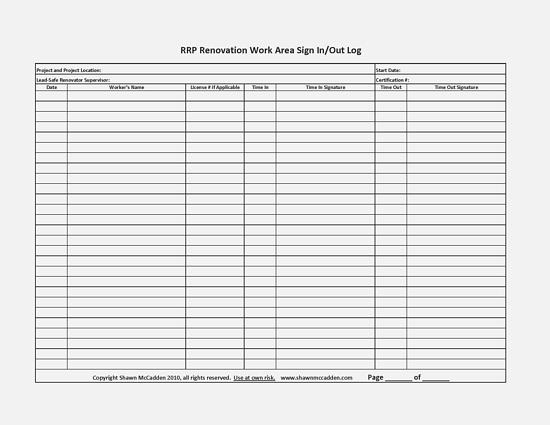
 Through my fellow NARI member contacts I have learned that on November 5, 2010, at their offices in Washington DC, the
Through my fellow NARI member contacts I have learned that on November 5, 2010, at their offices in Washington DC, the  Hybrivet Systems, Inc. and ESCA Tech, Inc. are the manufacturers of the only two commercially available
Hybrivet Systems, Inc. and ESCA Tech, Inc. are the manufacturers of the only two commercially available  At the meeting a representative from ESCA Tech, Inc asked the EPA when it was going to require that RRP training instructors demonstrate the proper use of both of the currently approved lead test kits at the EPA required Certified Renovator Training Classes. EPA responded that they were not going to require training on both kits and instructors could decide which kit they would demonstrate at the training.
At the meeting a representative from ESCA Tech, Inc asked the EPA when it was going to require that RRP training instructors demonstrate the proper use of both of the currently approved lead test kits at the EPA required Certified Renovator Training Classes. EPA responded that they were not going to require training on both kits and instructors could decide which kit they would demonstrate at the training.  Here is just one reason I will go with the Lead Check kits when I do RRP training. Using the D-Lead kits will definitely take longer than using the Lead Check kits. The certified renovator classes at eight hours long make for a long day and it is tough enough already for instructors to cover the subject matter in those eight hours. Demonstrating and using the D-Lead kits would either cause the class to go past eight hours, or time spent on other topics would need to be cut back to keep the day at eight hours. I know the students would rather not extend the day and I would prefer not to cut back on or eliminate any of the required subject matter.
Here is just one reason I will go with the Lead Check kits when I do RRP training. Using the D-Lead kits will definitely take longer than using the Lead Check kits. The certified renovator classes at eight hours long make for a long day and it is tough enough already for instructors to cover the subject matter in those eight hours. Demonstrating and using the D-Lead kits would either cause the class to go past eight hours, or time spent on other topics would need to be cut back to keep the day at eight hours. I know the students would rather not extend the day and I would prefer not to cut back on or eliminate any of the required subject matter.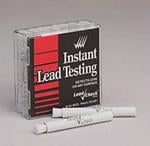
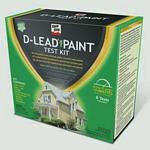
 Given the choice, as Massachusetts and EPA authorized RRP instructor, I will definitely use the Lead Check Swabs in my training classes. I offer some reasons for this choice below. However keep in mind, if you do RRP renovations, you will likely be choosing which test lead test kit to use and why for different reasons than I would as an instructor. I hope the information below helps you make a good decision when you select a lead test kit. Please feel free to add any other comparisons or consideration for choosing a lead test kit by commenting at the end of this article.
Given the choice, as Massachusetts and EPA authorized RRP instructor, I will definitely use the Lead Check Swabs in my training classes. I offer some reasons for this choice below. However keep in mind, if you do RRP renovations, you will likely be choosing which test lead test kit to use and why for different reasons than I would as an instructor. I hope the information below helps you make a good decision when you select a lead test kit. Please feel free to add any other comparisons or consideration for choosing a lead test kit by commenting at the end of this article.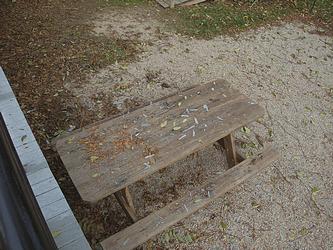
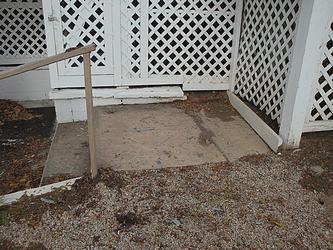 This is an excellent observation and question. The liability in such a situation is huge. I just recently had a conversation about this topic with an attorney well familiar with the RRP rule. Her suggestion was to consider asking the home owner to do testing of the occupants and perhaps even dust wipe testing at the home before beginning any work to establish a point of reference. Discussing this with and asking the home owner to do so would obviously be a sensitive conversation and could likely be a tough sell for many contractors.
This is an excellent observation and question. The liability in such a situation is huge. I just recently had a conversation about this topic with an attorney well familiar with the RRP rule. Her suggestion was to consider asking the home owner to do testing of the occupants and perhaps even dust wipe testing at the home before beginning any work to establish a point of reference. Discussing this with and asking the home owner to do so would obviously be a sensitive conversation and could likely be a tough sell for many contractors.
 Deleading under the MA Lead Law requires the removal or covering of
Deleading under the MA Lead Law requires the removal or covering of  At a recent
At a recent 
 Many RRPedia users, attendees of my seminars about the RRP Rule and a few others at several RRP workshops I have participated at have asked what should be done if someone has been poisoned by lead. Perhaps you might even know a carpenter poisoned by lead. I am not an expert in this area but thought it would be helpful to do some research and offer some guidance on what to do if affected by lead poisoning. You can find out about the symptoms of lead poisoning by reading this
Many RRPedia users, attendees of my seminars about the RRP Rule and a few others at several RRP workshops I have participated at have asked what should be done if someone has been poisoned by lead. Perhaps you might even know a carpenter poisoned by lead. I am not an expert in this area but thought it would be helpful to do some research and offer some guidance on what to do if affected by lead poisoning. You can find out about the symptoms of lead poisoning by reading this  Lead poisoning occurs in children and adults when lead builds up in their bodies, often over months or years. It is important to know that even small amounts of lead can cause serious health problems and possibly long term effects. Children under the age of 6 are especially vulnerable to lead poisoning, but adults, particularly those who do RRP related work can suffer serious consequences due to long term and or multiple exposures. At very high levels of exposure, lead poisoning can be fatal.
Lead poisoning occurs in children and adults when lead builds up in their bodies, often over months or years. It is important to know that even small amounts of lead can cause serious health problems and possibly long term effects. Children under the age of 6 are especially vulnerable to lead poisoning, but adults, particularly those who do RRP related work can suffer serious consequences due to long term and or multiple exposures. At very high levels of exposure, lead poisoning can be fatal.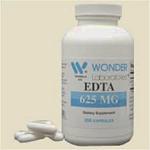 For more severe cases of lead poisoning, your doctor may recommend treatments such as Chelation therapy or EDTA therapy. Chelation therapy is a treatment that includes taking a medication that binds with the lead in your body and is eventually excreted in your urine. EDTA therapy is typically used for more serious cases. This treatment includes treating the patient’s blood with a chemical called ethylenediaminetetraacetic acid (EDTA). Depending on the patient’s blood lead level, more than one treatment may be required. Unfortunately, in severe cases, it may not be possible to reverse damage that has already occurred. Children with lead toxicity may also be iron deficient and can be treated with iron supplements.
For more severe cases of lead poisoning, your doctor may recommend treatments such as Chelation therapy or EDTA therapy. Chelation therapy is a treatment that includes taking a medication that binds with the lead in your body and is eventually excreted in your urine. EDTA therapy is typically used for more serious cases. This treatment includes treating the patient’s blood with a chemical called ethylenediaminetetraacetic acid (EDTA). Depending on the patient’s blood lead level, more than one treatment may be required. Unfortunately, in severe cases, it may not be possible to reverse damage that has already occurred. Children with lead toxicity may also be iron deficient and can be treated with iron supplements.


